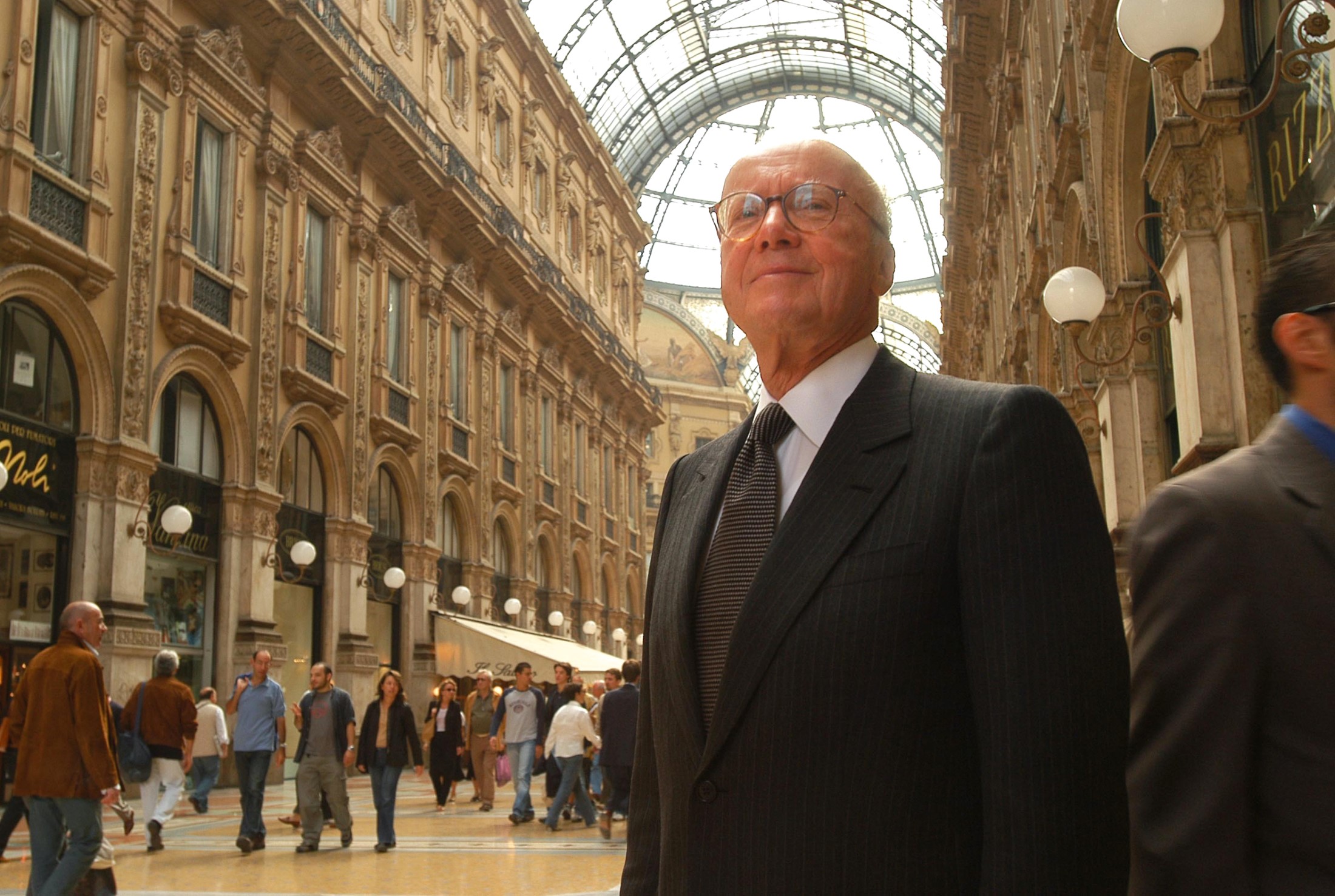A Modest Gentleman Who Changed Skylines Forever — Gerald D. Hines’ Death at Age 95 and His Real, Unmatched Legacy
The Builder Who Transformed the Worlds of Real Estate and Architecture Loved to Teach
BY Chris BaldwinGerald D. Hines set the standard at Hines for generations.
Even in his last decade of life, Gerald D. Hines’ immense vision loomed over everything his namesake real estate development firm did. Major directors at the company would ask themselves, “What would Hines do?” as they plotted the latest high-profile project for the global real estate giant.
Now, that Gerald D. Hines the man has died at age 95, passing peacefully at one of his family homes in Connecticut on Sunday, that mantra will no doubt live on. For no one has ever shaped skylines or built a company quite like Gerald Hines. In taking his firm from the one-man startup he launched in Houston, his adopted hometown, in 1957 into an international force with more than 4,800 employees today, Hines forever changed the worlds of real estate development and architecture. Often using the same simple slide rule he used as a student at Purdue University.
Hines believed in striking, distinctive buildings and the power of prominent architects. He turned to some of the world’s greatest architects to design his buildings, revolutionizing commercial real estate in the process. Gerald D. Hines proved that having a unique building designed by a star architect could be a real draw.
In many ways, Hines showed the often conservative commercial real estate world that you could go beyond cookie-cutter office towers and make something special. Something that mattered. Something that made a lasting positive impact on a city’s skyline.
The opposite of a screamer or chest-thumping real estate tycoon, Gerald D. Hines used a measured, almost scholarly approach to create unforgettable buildings.
“His absolute humility and how down to earth he was,” renowned journalist Mark Seal, who wrote the book Raising The Bar: The Life and Work of Gerald D. Hines, tells PaperCity when asked what sticks out to him most about Hines. “He was proud to be educated at Purdue as an engineer, which led him to Houston where, with a plastic slide rule, which he showed me often, he transformed first the Houston skyline and then the skylines of the world.”
Rather than revel in his accomplishments, Hines obsessed over all the little details along the way. When Hines officials led me on tours of the company’s new downtown residential towers, they would note how Gerald D. Hines would always look down the hallways to see the sights lines, knowing that often forgotten look could set the entire tone of the building for its future residents.
Who else thought of such things before Hines?
“He was quiet, modest,” Patricia Oliver, the dean of the University of Houston’s Gerald D. Hines College of Architecture, tells PaperCity. “But he was a very curious person. And he never took anything for granted. I always admired that about him. He was a tremendously successful businessman. But he never focused on that so much.
“He focused on what it was that drove him as a businessman, what he believed in. He focused on the power of architecture to change that business.”
Like legendary UCLA coach John Wooden, another low-key Indiana native whose slight frame and spectacles sometimes hid his intense drive to excel, Gerald D. Hines taught without having to scream.
Hines’ groundbreaking architect partnerships included Lord Norman Foster; Bruce Graham and David M. Childs of SOM; Gyo Obata; Philip Johnson and John Burgee (for 15 projects total); I.M. Pei and Harry N. Cobb; Cesar Pelli; Kevin Roche; Robert A.M. Stern; A. Eugene Kohn and William E. Pedersen; Charles W. Moore; Frank O. Gehry; Jon Pickard and Jean Nouve.
Hines’ devotion to difference — making architecture continued throughout his life. He donated $7 million to the University of Houston School of Architecture — now the Gerald D. Hines College of Architecture & Design — in 1997.
As a firm, Hines has now developed more than 907 projects around the world, including 100 buildings taller than 25 stories. It still has the tallest office towers in Italy, Houston, New Jersey, Oklahoma and Kentucky. Gerald D. Hines forever changed Houston’s skyline with the development of towers that have stood the test of time, including Pennzoil Place, the former Bank of America building and the current JPMorgan Chase tower, the tallest high-rise in Houston at 75 stories.
In the 1960s, Hines developed The Galleria mall and One Shell Plaza at the same time — even as many doubted if his then still small firm could do it. Still, some Houstonians may know the Hines name best from the tourist-draw Waterwall that bears his name. The distinctive, thunderous, ever-flowing Waterwall was part of Hines’ Williams Tower project, which was the tallest building (64 stories) outside of a central business district in the entire United States when it was built in 1983.

Hines was tremendously proud that the first Houston projects he developed were still 95 percent leased 30, 40 and sometimes 50 years later. His vision stood the test of time, but it never came close to standing still.
“He was always talking about innovation,” Oliver says. “What’s coming next. He never rested on his laurels. It was never business as usual with him. And that’s driven from an inquisitive mind. I always respected his ability to keep looking to the future.”
Gerald D. Hines was a doer who was also a teacher.
“The most joy you saw on his face was when he was surrounded by students,” Oliver notes. “He just transformed. It just gave him great pleasure. And it was so evident, the students picked up on it as well. And they were drawn to him. They just swamped to him. He was not so imposing — so the students were not as intimidated by him as they expected to be because of his reputation.
“He would ask questions. He would listen to what they had to say. He would engage them in a very personal one-on-one way.”
Hines teaching extended into his firm’s global offices as well. In many ways, working at Hines meant getting master lessons from one of real estate’s most influential figures — even if Hines’ executives did not always realize when it was happening. Hines was somehow a modest billionaire who did not flaunt his power.
“Beyond his significant, impactful career and his pioneering contributions to architecture, sustainability and the built environment, Dad felt his greatest achievement is the team of dedicated professionals who have and will continue to carry on his legacy of peerless quality, integrity and innovation,” his son Jeffrey C. Hines says.
Proving Architecture More Than Matters
Like legendary UCLA coach John Wooden, another low-key Indiana native whose slight frame and spectacles sometimes hid his intense drive to excel, Gerald D. Hines taught without having to scream. He proved that a gentleman could change the often rabid, dog-eat-dog world of real estate.
Hines is survived.by his wife Barbara, four children (including Jeffrey C. Hines, who has been running day-to-day operations at the firm since 1990 as president and CEO and now takes on the chairman role), 15 grandchildren and one great grandson. He will be laid to rest in a private ceremony in his beloved Aspen. A public celebration of his life will be held when coronavirus health conditions allow it to be done safely. The University of Houston College of Architecture planned to celebrate its 75th year this October with a gala that honored Gerald D. Hines. The coronavirus has pushed that celebration to October 2021, but Hines still will be the honoree.
Gerald D. Hines leaves behind a firm that has a presence in 225 cities in 25 different countries today, one with 144.1 billion dollars of assets under management.
Not bad for a simple engineer who graduated from Purdue University in his native Indiana in the 1940s after overcoming undiagnosed dyslexia as a kid. One who never stopped being a teacher — or a willing student. A curious mind can change the world.
“He really proved that architecture was more than aesthetics,” Oliver says. “It was more than style. Quality is what made his projects stand out amongst all his competitors. His projects lasted longer and performed better.”
Hines’ projects — as mammoth and city changing as they were — did not make him act like a big shot, though.
“I’ll never forget flying with him from Milan to London — cramped almost in the very last (row) of the (commercial) plane, which didn’t bother him one bit,” Mark Seal remembers from their time working on the book. “There we sat amid everyone else — this mega developer who had shaped both the skyline of the city we had left as well as the city where we were landing — and he was excited and happy and content. His enthusiasm was boundless.”
That’s Gerald Hines, the gentleman city changer.










































































_md.jpg)










_md.jpg)




_md.jpg)











